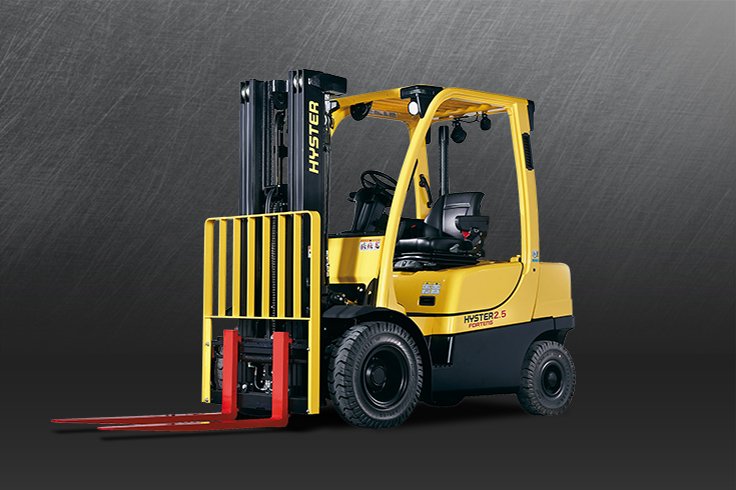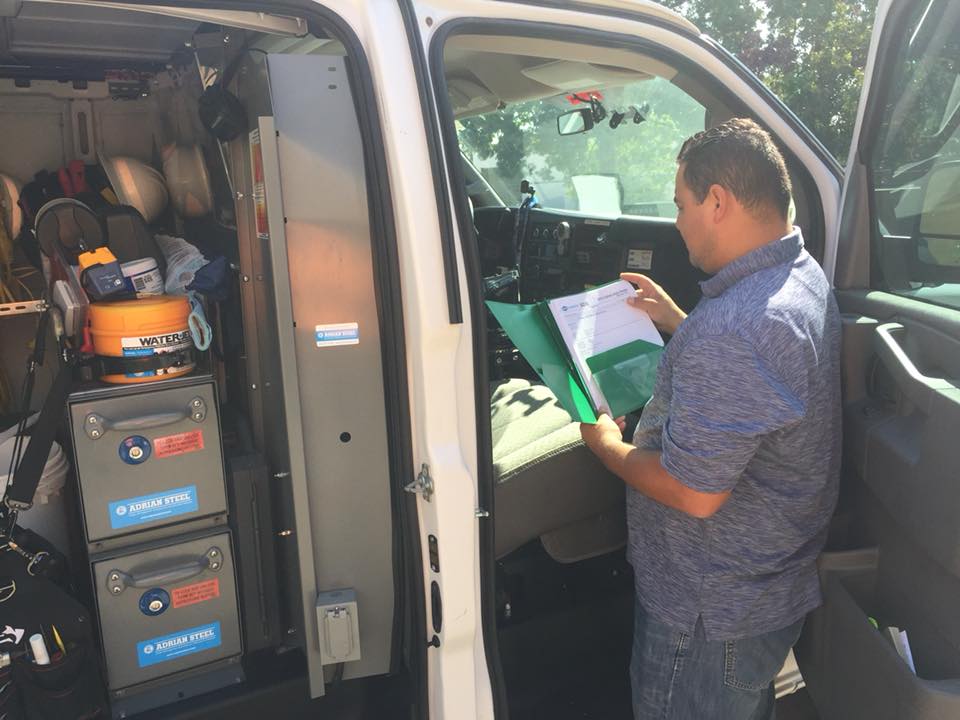Title Page
-
Site conducted
-
Conducted on
-
Location
-
Prepared by
Information
-
This pre start is to be completed prior to each days usage. If any items are found to be damaged than equipment is to be tagged out, key removed and reported to the supervisor.
-
Operator is competent and has passed Entergy's formal classroom training and practical behind the wheel training for the forklift being operated within the past three years?
-
Forklift identification make/model?
Pre Start Checklist
-
Are tires and rims in good condition? Check for any visual damage. Check tire pressure if applicable.
-
Fluids - check to ensure engine oil, hydraulic oil, battery fluid, coolant level and hydraulic levels are adequate
-
Fluids - check there are no leaks under the forklift
-
Structure - check there are no cracks, dents or visible damage of any sort
-
Forks - check for any visible damage and ensure that they are evenly spread and locking mechanism is working correctly
-
Mast - check chains for any visible sign of damage, check rams aren't damaged or leaking. Check hydraulic cylinders for any leakage or visible signs of damage
-
Maximum lift height?
-
Battery - check for any visible sign of damage and operates correctly
-
Engine bay - is engine bay clean and is the locking mechanism working correctly
-
Load plate - is load plate fitted and legible? Are you aware of the safe working load of the forklift?
-
Guards - check overhead and back rest guards for any visible signs of damage
-
Controls - check seat condition. Are controls clearly marked. Ensure seat and steering wheel are in good condition and properly adjusted. Seat belt works correctly
-
Fire Extinguisher - Inspected, charged and in good condition?
Post Start Checklist
-
Controls - are controls, pedals and indicators working?
-
Are the lights and flashing strobe working correctly?
-
Steering - does the steering wheel turn smoothly from lock to lock?
-
Brakes - do both the park brake and foot brake work correctly?
-
Hydraulics - check that lift, tilt and reach work properly for their full extent?
-
Horn operable?
-
Oil Pressure
-
Temperature
-
Hour Meter
Checks complete
-
Is the forklift safe to use?
-
Signature
Hazards in the Workplace
-
SURFACES Know the condition of the surface or surfaces that you intend to drive on Is the surface flat? Is it slippery, wet, have oil or grease? Is it concrete or rock? Does it have pot holes or raised surfaces? Is there going to be ramps involved? Is there enough room for you to maneuver? Is there a place where you can run off the surface, like a dock? SIZES AND TYPE OF MATERIALS OR EQUIPMENT TO CARRY Is the equipment large or bulky(such as bushing crates or boxes)? Is the equipment tall or unstable(such as top heavy P.T.’s and C.T.’s)? Is the equipment long or wide(such as buss pipe or switch pipe)? Is your equipment fragile or sensitive to movement.? Is your equipment heavy on one end or the other? OVERHEAD OBSTUCTIONS Are there any doors along your path that you have to travel through(such as a shop door)? Are there objects hanging out from a building(such as a security light or a sign)? Is there enough clearance for the equipment that you are carrying? Know how high your load will be when you are traveling with your forks raised? RAMPS Without a load you should keep the (counter weight) upgrade going down or going up a ramp or hill. With a load you should keep the (load) upgrade. Always make certain that the ramp you are going to use can with stand the weight of the forklift and its load! BROKEN OR DAMAGED EQUIPMENT Does the equipment have broken or damaged parts that could cause you to lose the load being carried? Is the palate broken or damaged where it will cause you to lose the load? VISION Is your vision blocked because of the size of a load can you see where you are going? Do you need to travel backwards so you can see where you are going? Do you need for someone to spot for you and give you directions? CORNERS AND OBSTICLES Travel slowly and sound your horn when approaching a corner or an obstacle that you cannot see around Can you approach from a different direction where you can get a better view.
-
BUILDINGS ENTERING AND EXITING Remember when entering or exiting a building light might affect your vision, travel slowly to give your eyes time to adjust. Watch for obstacles and people when entering or exiting. Make sure your load has enough clearance. Check your rear swing when turning in tight quarters. Sound your horn to warn others. Always make sure there is proper ventilation for operating your forklift in an enclosed area. TRAFFIC AND PEDISTRIANS Always be on the lookout for pedestrians and automobiles give them the right of way. Never let anyone walk under the forks loaded or unloaded. Never approach someone that is between you and a solid object. Sound your horn to let pedestrians know you are approaching. Always be aware of other forklift operators in the area leave plenty of room between your forklift and the on you are following. TYPES OF TIRES ON FORKLIFTS The type of tire on your forklift will make a difference in the way it handles or reacts. If you have pneumatic tires air pressure can make a difference the way your forklift reacts. Make sure the pressure is correct before lifting heavy objects. Some forklifts have small smooth tires mainly used in warehouses they are not made to travel over rough terrain.







